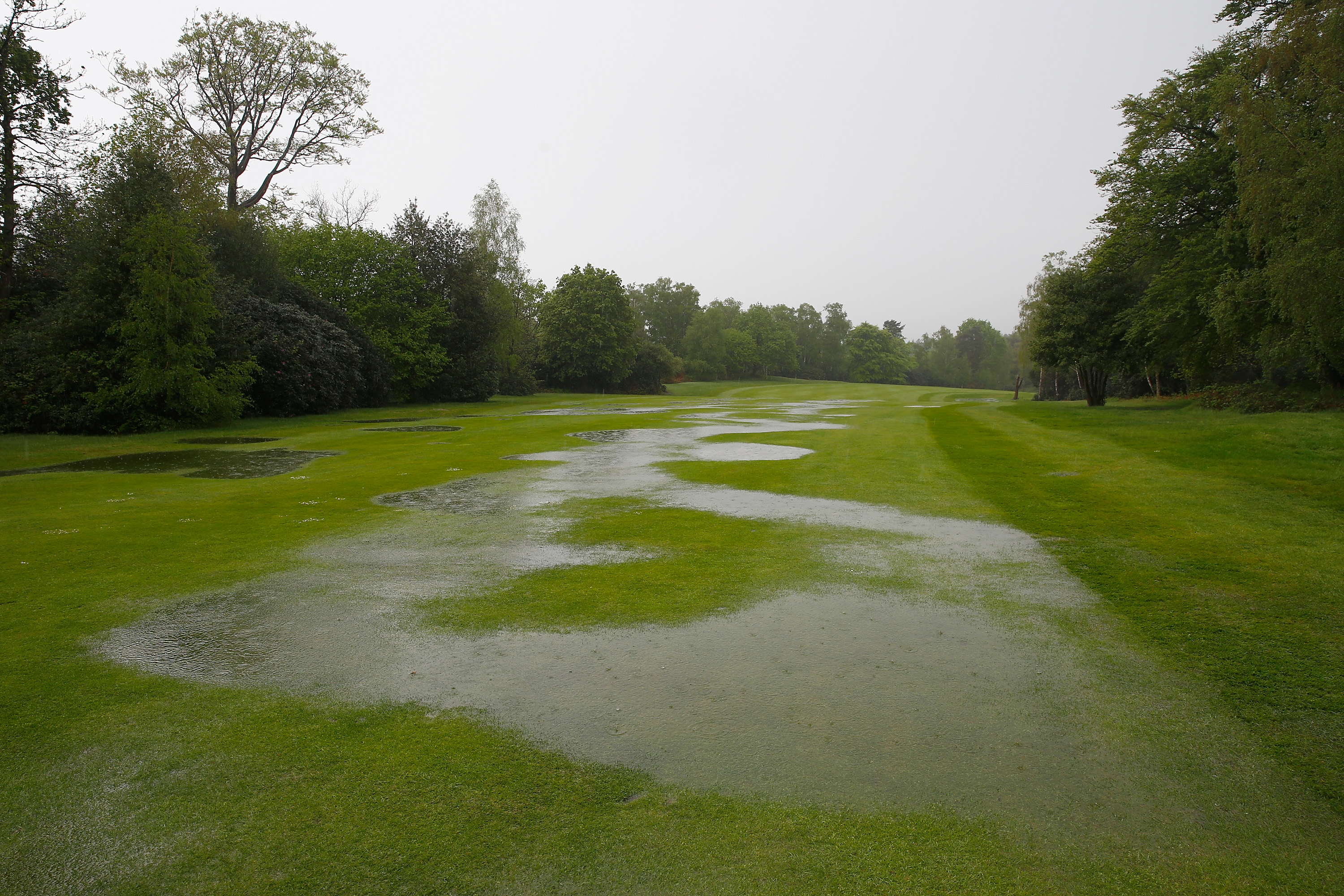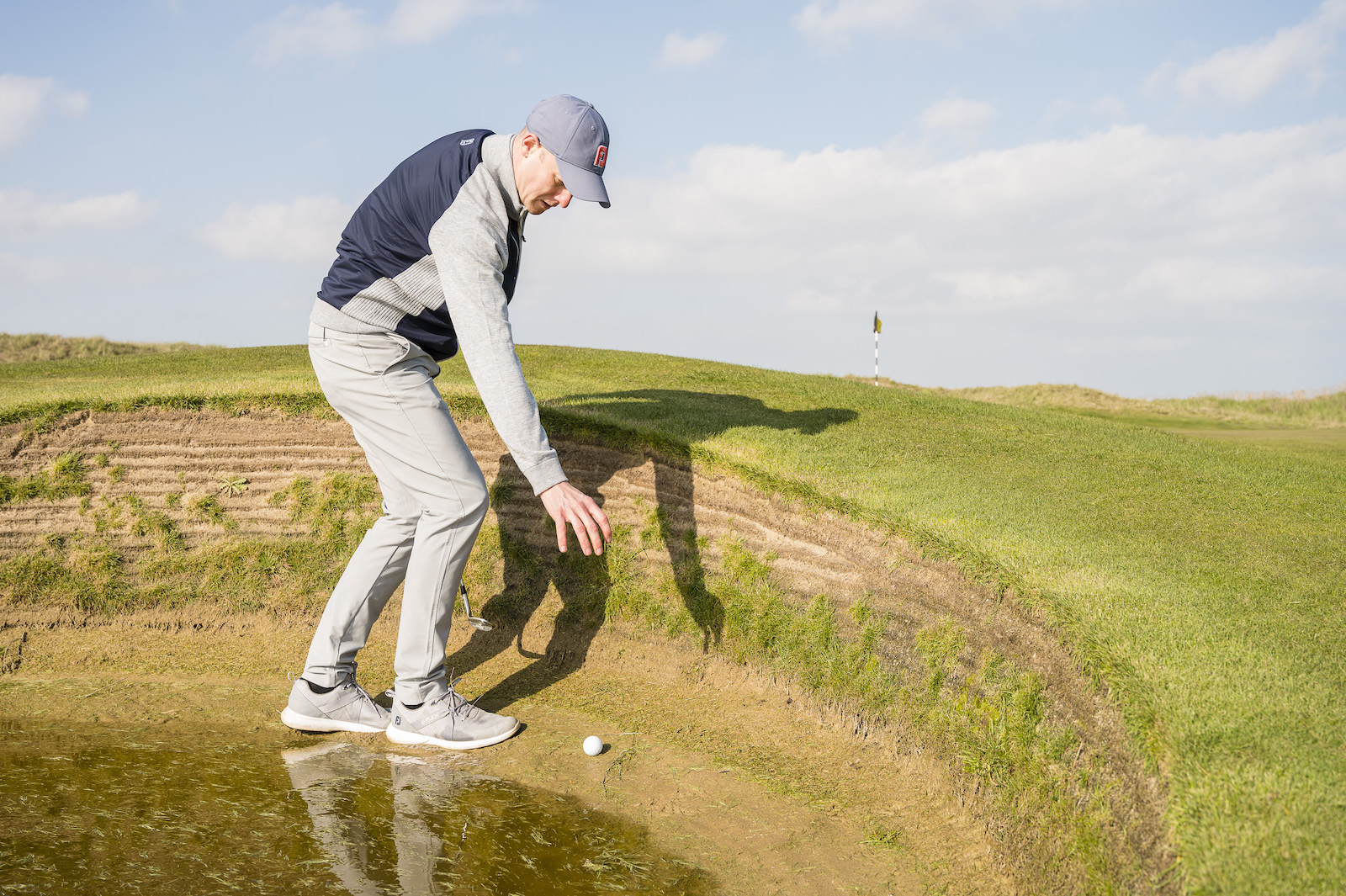
While some courses, such as links or hilltop layouts, may not play radically differently from season to season, others will play very differently from winter to summer, especially some of our parkland courses laid out on clay, where drainage can be an issue in the off-season. With that in mind, I’ve picked out eight Rules that it will be handy to know when conditions turn a little wetter or softer…
Preferred lies
Although golfers use the terms ‘preferred lies’ and ‘winter rules’ interchangeably, Model Local Rule E-3 (preferred lies) makes no mention of any specific season and can actually be implemented at any time of year for the fair playing of the game or to protect the fairways, so always check whether or not preferred lies are in force via your club’s local rules. That said, they will still be far more common in winter.

Preferred lies are invariably confined to fairways or areas cut to fairway height or less (as per R&A recommendations) and when taking preferred-lie relief you don’t have to mark the ball’s position first before lifting and cleaning it (though it’s not a bad idea to do so). You are then allowed to place the ball on a spot not nearer the hole within a specified limit from the reference point of where it was lying. This distance is often 6ins but can vary – maybe a scorecard’s length or a club’s length, for example. But once you’ve let go of the ball, that’s it unless it rolls nearer the hole. So, if you try to cleverly pop it on a tuft and it then rolls backwards into a poor lie, you’ll have to play it from there!
Embedded ball
Balls are more likely to embed or plug in their own pitchmarks in winter, but thankfully the Rules don’t expect you to play an embedded ball anywhere in the general area (other than in sand – e.g., a native waste area) these days, though there is no free relief for embedded balls in bunkers or penalty areas.

When taking free embedded ball relief under Rule 16.3, your reference point is the spot right behind where the ball is embedded, from where you then have a one club-length relief area arc, no nearer the hole, in which to drop.
Temporary water
Temporary water is one of four ‘abnormal course conditions’ in the Rules and is defined as: “Any temporary accumulation of water on the surface of the ground (such as puddles from rain or irrigation or an overflow from a body of water) that: is not in a penalty area and can be seen before or after the player takes a stance (without pressing down excessively with their feet).”
‘Temporary water’, as defined, is far more likely in winter and if it interferes with the lie of your ball or area of intended stance or swing you are entitled to a free drop under Rule 16.1, provided 1) playing the ball as it lies isn’t clearly unreasonable because of something from which there is no free relief (e.g., your ball is lying deep in a bush); or 2) you don’t choose a stance or direction of play that is clearly unreasonable to claim interference – in other words, as long as you're not trying it on!

Assuming you’re not trying it on, you must find your nearest point of complete relief not nearer the hole – your reference point – from the temporary water and you then have a one-club length relief area from there in which to drop not nearer the hole. If your ball was lying in the general area, your relief area must also be in the general area.
Of particular relevance to winter, it's worth noting that neither dew nor frost are classed as temporary water, while snow and natural ice (other than frost) are either loose impediments or, when on the ground, temporary water, at your choosing.
Temporary water in a bunker
What if the temporary water is in a bunker? Well, the same applies – you are entitled to free relief by finding your nearest point of complete relief within that same bunker (Rule 16.1c). Obviously, you still run the risk of the ball plugging when dropped, but there is nothing you can do about that.

Hopefully, if it’s been very wet, the sand might be compacted, and you are at least dropping from knee height rather than shoulder height these days.
Point of maximum available relief
What if there is no point of complete relief? Well, in bunkers (Rule 16.1c) and on the putting green (Rule 16.1d) you can opt for the point of maximum available relief, which actually allows you to not take complete relief in those two areas of the course only. So, if there is somewhere in a bunker where you could drop in either shallower water or so the ball is clear but your feet are not, you are allowed to do that to avoid the penalty shot it would cost you to drop back on line outside the bunker (which is always an option available to you).

On flooded greens, it also applies to your line of play as well as where your ball is lying or where you are standing. You are allowed to find the point where there is least interference from the temporary water and then place, rather than drop, your ball at that point. However, the additional ‘line of play’ relief only applies if your ball is lying on the putting green and not when it is on the fringe or fairway. But when your ball is lying on the putting green, your point of maximum available relief can be either on the green or in the general area.
Flooded bunker
As stated previously, you always have the option to take relief from temporary water outside the bunker, but such relief must be back-on-the-line and comes at the cost of a penalty stroke. If the bunker is completely flooded, this will be your only option unless you decide to attempt to play it.

Some golfers think it unfair that you should be penalised a shot in such circumstances, but the rulemakers feel that free relief would allow you to get away scot-free from hitting your ball into something that is supposed to be a hazard, if not in name any more, at least in nature. You may disagree, but that is the way it is, I’m afraid.
Loose impediments
I’m mentioning loose impediments simply because there is likely to be more debris lying around on the golf course in the winter as a result of the most recent named storm or just the usual leaf fall. While you can remove loose impediments - even in bunkers and penalty areas now - it is worth remembering that if your ball moves in the process, you will be penalised a stroke under Rule 9.4b and must also replace the ball where it was. So, if your ball is clearly being propped up by a stick up a bunker face or in the rough, you’re just going to have to take your chances hitting stick then ball to avoid an unnecessary penalty.

Ball blown by wind on green
Finally, with strong winds more frequent and often less grass cover on the greens, it’s worth stressing the wisdom of marking your ball as soon as possible on sloping greens on windy days. Why? Well, if you do that, then that is where you will end up putting from next even if your ball is blown elsewhere when you replace it (or the closest spot not nearer the hole where it will stay at rest). If you haven’t marked and lifted your ball and it blows away, you will have to play it from its new spot, even if that’s off the green or possibly in a bunker.







